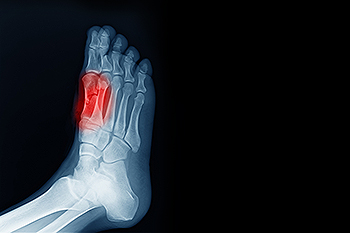Garner (919) 661-4150
Signs and Solutions for Sesamoiditis
Tuesday, 24 January 2023 00:00
Two tiny bones in the feet located just below the big toe are called the sesamoid bones. The sesamoid bones are at work each time you walk or run, providing leverage to the big toe. When these bones, which are held in place by tendons or embedded in muscle, become irritated, the result is an inflammatory condition known as sesamoiditis. It is considered an overuse injury. People who spend a lot of time on their feet for work, sports, or high-impact activities often incur sesamoiditis. In addition, people with flat feet or high arches may experience this inflammation. Symptoms generally do not emerge suddenly, but instead, develop over a period of time. You may feel intermittent pain in the big toe, notice swelling or bruising in the area, or experience a decrease in the normal functioning of the big toe. Resting the foot often is a good idea, and wearing orthotics in the shoes is another. For more information on how to deal with sesamoiditis, including being fitted for custom orthotics, please consult a podiatrist.
Sesamoiditis is an unpleasant foot condition characterized by pain in the balls of the feet. If you think you’re struggling with sesamoiditis, contact Chukwuma Ukata, DPM of Advanced Carolina Foot and Ankle Center. Our doctor will treat your condition thoroughly and effectively.
Sesamoiditis
Sesamoiditis is a condition of the foot that affects the ball of the foot. It is more common in younger people than it is in older people. It can also occur with people who have begun a new exercise program, since their bodies are adjusting to the new physical regimen. Pain may also be caused by the inflammation of tendons surrounding the bones. It is important to seek treatment in its early stages because if you ignore the pain, this condition can lead to more serious problems such as severe irritation and bone fractures.
Causes of Sesamoiditis
- Sudden increase in activity
- Increase in physically strenuous movement without a proper warm up or build up
- Foot structure: those who have smaller, bonier feet or those with a high arch may be more susceptible
Treatment for sesamoiditis is non-invasive and simple. Doctors may recommend a strict rest period where the patient forgoes most physical activity. This will help give the patient time to heal their feet through limited activity. For serious cases, it is best to speak with your doctor to determine a treatment option that will help your specific needs.
If you have any questions please feel free to contact our office located in Garner, NC . We offer the newest diagnostic and treatment technologies for all your foot and ankle needs.






